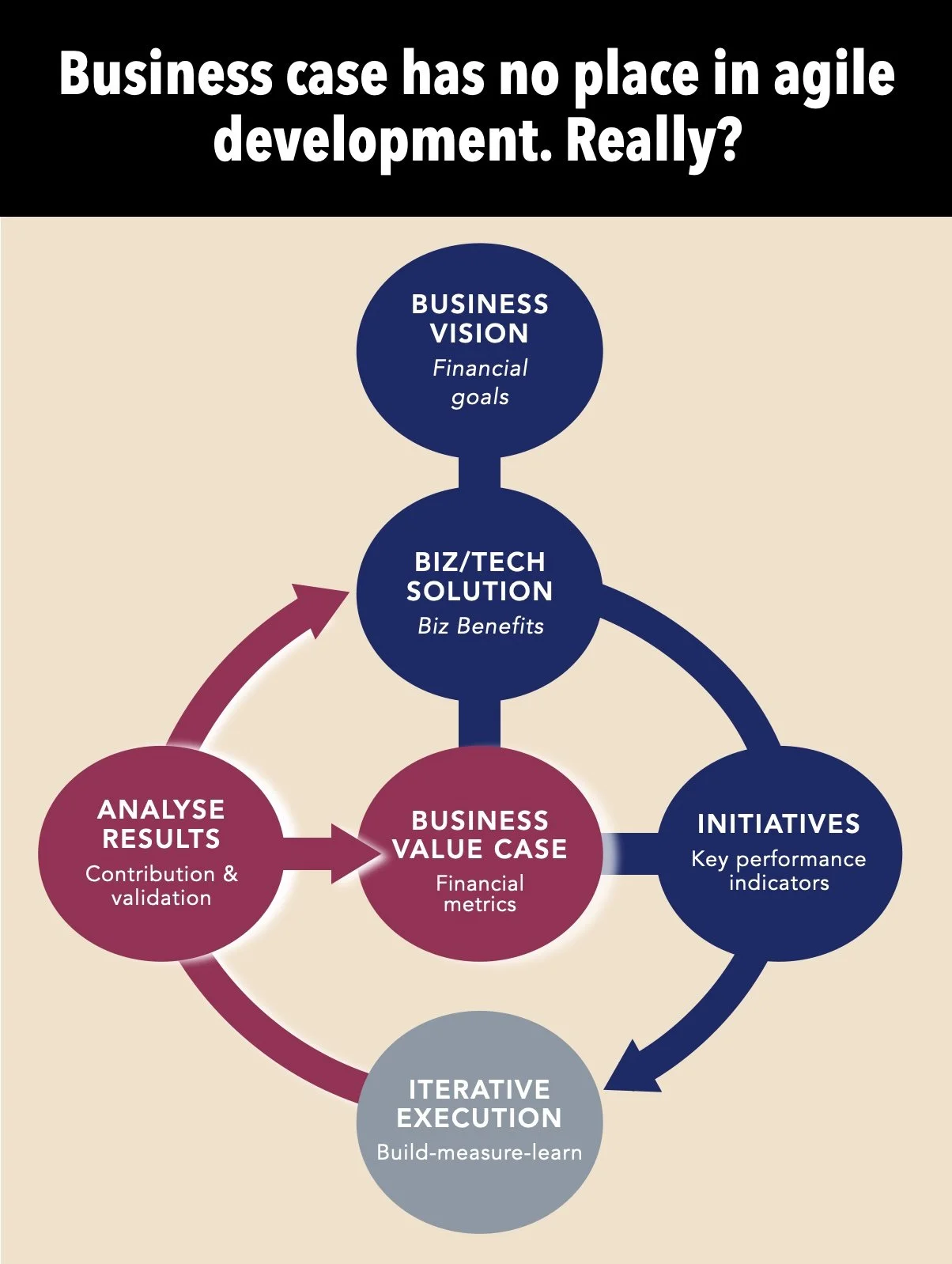Business case has no place in agile development. Really?
I’ve been told that business cases have no place in agile delivery. The degree of planning and detail required to assemble a business case contradicts agile thinking.
The agile approach does not recommend such upfront effort and maintains that the information is useless without an iterative test-and-learn approach. There is some sound logic behind this. Technology and digital initiatives are often innovative, and it is difficult to predict the end solution. So, how can you accurately predict costs and quantify the business return?
The business case still plays a critical role
Dismissing business cases as redundant fails to acknowledge the following.
An organisation's resources, time, and money are limited. Demand usually exceeds funding capacity. All initiatives must be prioritised based on the likely return on investment.
Large organisations still go through an annual budgeting process, which requires business cases to be submitted by all parties. A lack of business cases puts you at a disadvantage.
An idea that requires several months of effort from multiple functions must have a more well-thought-out justification than one that requires a single team effort for a week.
A plan-build-measure-learn (the plan, here, represents the business case) is an established approach for digital startups. Few are unlikely to have raised initial funding without a well-thought-through business plan. The same approach should be no different within established organisations.
However, a suitable business case for the digital age needs reframing to accommodate the benefits and learnings achieved through the modern execution methodology.
Business case as an integral part of the test-and-learn delivery
A business case is a hypothesis for business value creation. It includes estimates for the performance of key business metrics and demonstrates how financial performance (revenue, profits, ROI) can be achieved based on a defined expenditure.
It should not be used as a set-in-stone prediction of actions and results. See it as a guide for experimentation and use test-and-learn results to inform and validate the business case hypothesis.
I worked with a Financial Director who believed a spreadsheet always drives successful strategies. We'd review and input the latest test results into the business case. We then ran some scenarios to identify the next market iteration and the funds needed to achieve the business goals.
Test and learn results validate and refine these business case assumptions, improving its ability to show how the business performance is best achieved. This requires a mindset shift away from the blind faith that a detailed upfront strategy and business case development will always deliver the desired results.
